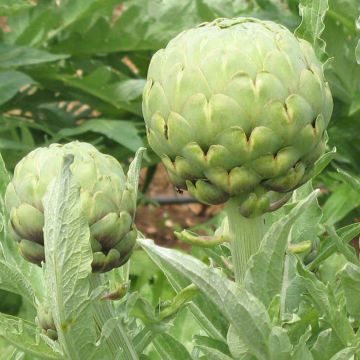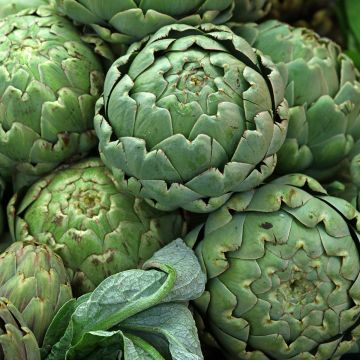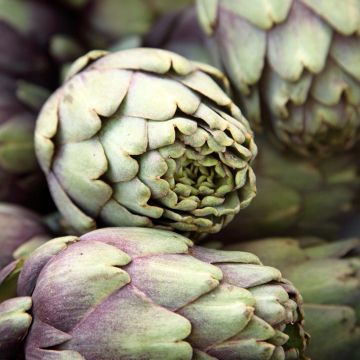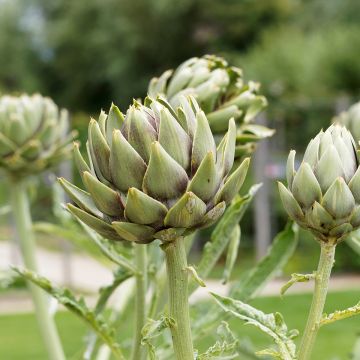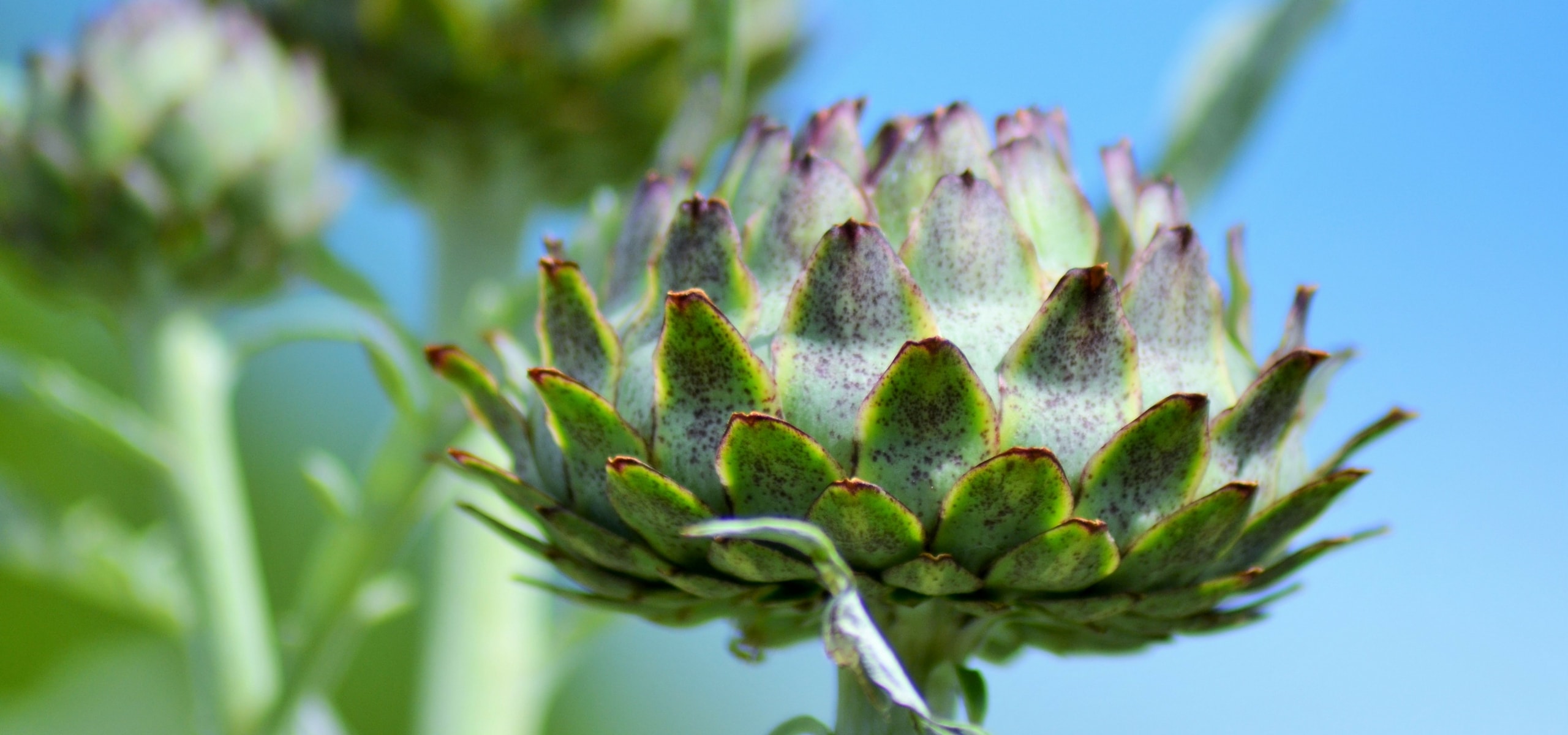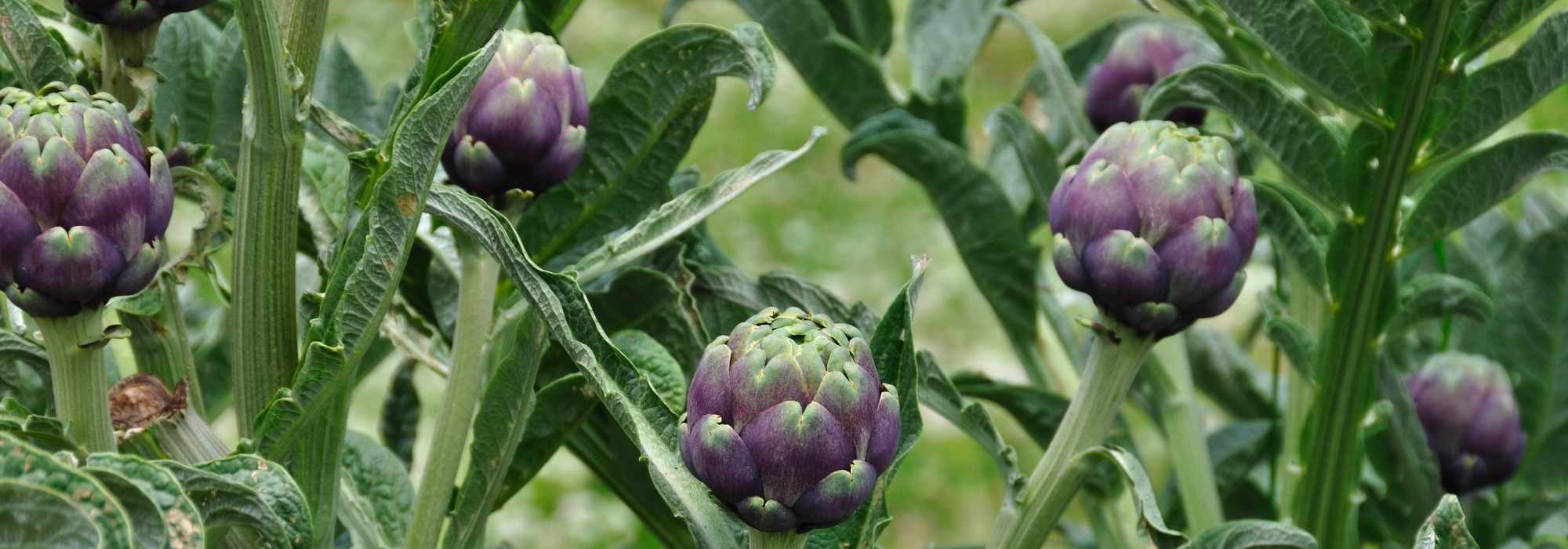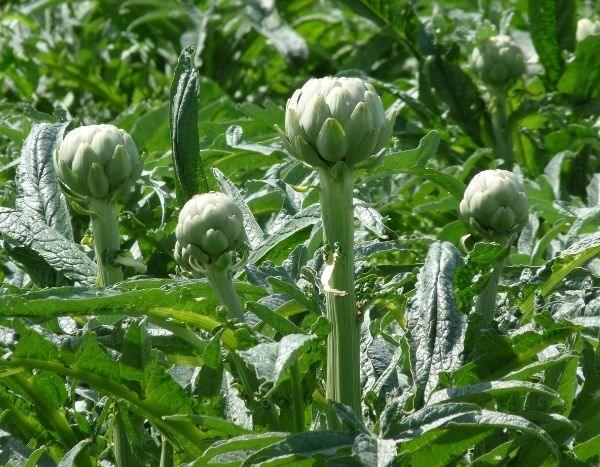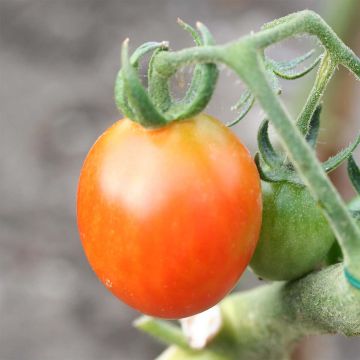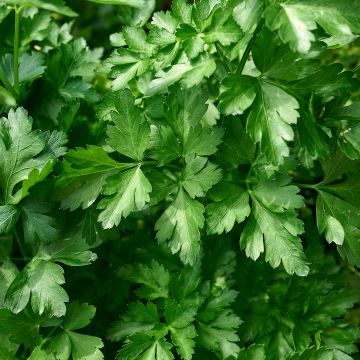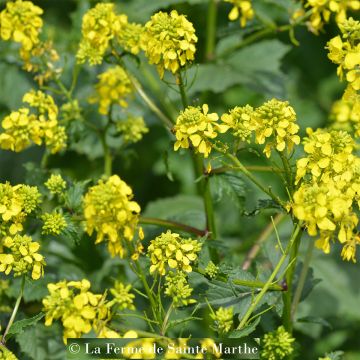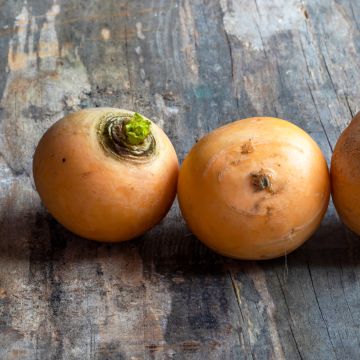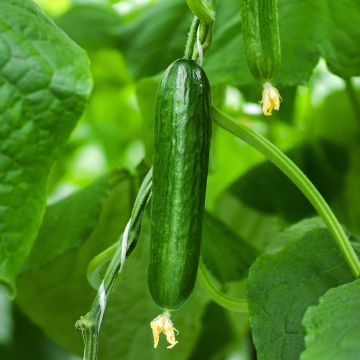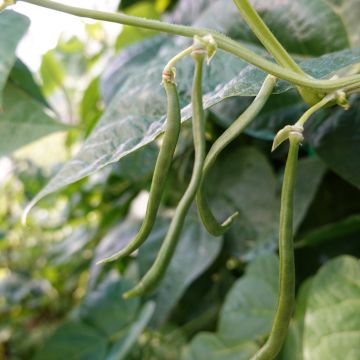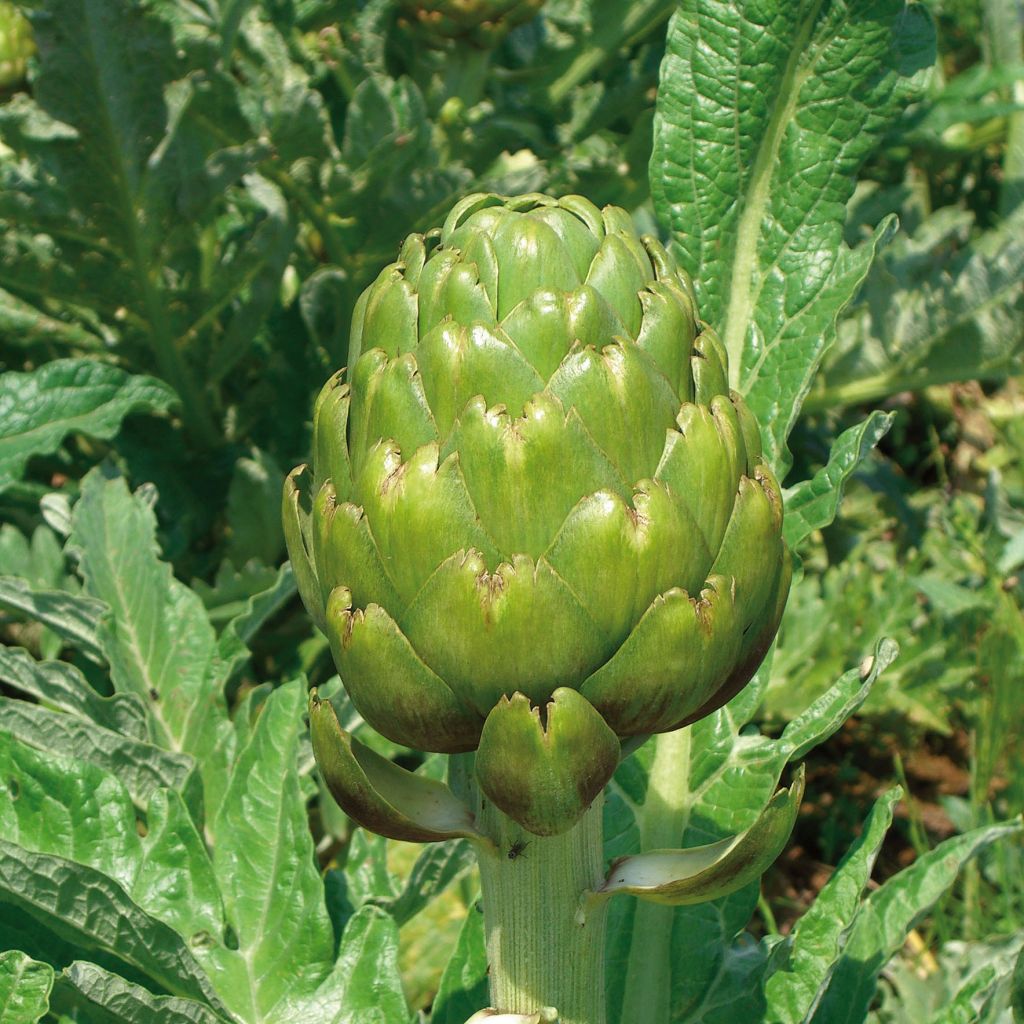

Artichoke Imperial Star - Cynara Scolymus
Artichoke Imperial Star - Cynara Scolymus
Cynara scolymus Imperial Star
Globe Artichoke
It was out of curiosity that I wanted to test growing artichokes from seeds. I was skeptical and should have refrained. I obtained a few fairly decent plants, but the fruiting was almost nonexistent and the plants completely withered, even though they are normally perennial. I won't do it again. I don't recommend it! Thankfully, I had my plants (of a different variety) purchased from a garden centre located 5 km (3.1mi) away from my place!
Yves, 21/11/2019
Special offer!
Receive a €20 voucher for any order over €90 (excluding delivery costs, credit notes, and plastic-free options)!
1- Add your favorite plants to your cart.
2- Once you have reached €90, confirm your order (you can even choose the delivery date!).
3- As soon as your order is shipped, you will receive an email containing your voucher code, valid for 3 months (90 days).
Your voucher is unique and can only be used once, for any order with a minimum value of €20, excluding delivery costs.
Can be combined with other current offers, non-divisible and non-refundable.
Why not try an alternative variety in stock?
View all →This plant carries a 6 months recovery warranty
More information
We guarantee the quality of our plants for a full growing cycle, and will replace at our expense any plant that fails to recover under normal climatic and planting conditions.
Description
The Imperial Star artichoke is an early and vigorous variety that produces 7 to 8 heads per plant of about 1.5 m (5ft), with a sweet and tender flavour. This perennial vegetable plant is cultivated for its round heads, about 12 cm (5in) in diameter, formed of oval, fleshy scales at the base (the leaves) and its floral receptacle, the artichoke heart. Sowing from February to March for a harvest 6 to 7 months later.
The artichoke is a perennial vegetable plant that belongs to the Asteraceae family. It belongs to the genus Cynara, like the Cardoon - and the Thistle. Known to the Greeks and the Romans since antiquity, it was introduced in France around the 15th century.
It is a plant that, although perennial, is often cultivated for two or three years. It has an upright stem that can reach a height of 2 metres (7 feet) and large, deeply cut leaves. It is its inflorescence, or rather its flower bud, which is harvested before the flower develops, that is consumed.
Coluche said of the artichoke: "It's the only dish where when you're done eating, you have more on your plate than when you started!". This is neither entirely false nor entirely true because, in the artichoke, everything is edible, or almost everything: the heart, with vinaigrette, the base of the leaves, but also the leaf stems which, when blanched, can be consumed like those of the cardoon.
The artichoke has anti-anemic, detoxifying, stimulating, and tonic properties, and contains vitamins A, B1, B2, C. It has a beneficial effect on the liver.
In the garden, the Artichoke thrives in rich and well-draining soil. As a true Mediterranean plant, its worst enemies are humidity and frost. Therefore it is best suited for mild climates and preferably grown on a mound.
Harvest and storage: The harvest of the flower buds should be done as they develop, each year. They should be harvested before the central scales spread apart and consumed as quickly as possible.
Gardener's tip: In regions with harsh winters, protect your plants with a thick layer of dry leaves. Keep a close eye on your plants as aphids love them!
Harvest
Plant habit
Foliage
Botanical data
Cynara
scolymus
Imperial Star
Asteraceae
Globe Artichoke
Cultivar or hybrid
Perennial
Other Artichoke seeds
View all →Planting and care
Sowing from February to March
The seeds are sown in pots. Sow 2 or 3 seeds per pot. Keep only the best young plant for transplanting about 2 months after sowing. You will plant them in their permanent position at a distance of 80cm (32in) to 1 metre (3 feet).
In warm southern regions, you can sow directly in the ground, in holes spaced 80cm (32in) to 1m (3ft) apart.
Maintenance
Hoe and weed. Water if necessary. Mounding up the plants is beneficial as is good mulching. In October-November cut the stems that have produced flower buds, a few centimetres above the ground.
Seedlings
Care
Intended location
Planting & care advice
-
, onOrder confirmed
Reply from on Promesse de fleurs
Similar products
Haven't found what you were looking for?
Hardiness is the lowest winter temperature a plant can endure without suffering serious damage or even dying. However, hardiness is affected by location (a sheltered area, such as a patio), protection (winter cover) and soil type (hardiness is improved by well-drained soil).

Photo Sharing Terms & Conditions
In order to encourage gardeners to interact and share their experiences, Promesse de fleurs offers various media enabling content to be uploaded onto its Site - in particular via the ‘Photo sharing’ module.
The User agrees to refrain from:
- Posting any content that is illegal, prejudicial, insulting, racist, inciteful to hatred, revisionist, contrary to public decency, that infringes on privacy or on the privacy rights of third parties, in particular the publicity rights of persons and goods, intellectual property rights, or the right to privacy.
- Submitting content on behalf of a third party;
- Impersonate the identity of a third party and/or publish any personal information about a third party;
In general, the User undertakes to refrain from any unethical behaviour.
All Content (in particular text, comments, files, images, photos, videos, creative works, etc.), which may be subject to property or intellectual property rights, image or other private rights, shall remain the property of the User, subject to the limited rights granted by the terms of the licence granted by Promesse de fleurs as stated below. Users are at liberty to publish or not to publish such Content on the Site, notably via the ‘Photo Sharing’ facility, and accept that this Content shall be made public and freely accessible, notably on the Internet.
Users further acknowledge, undertake to have ,and guarantee that they hold all necessary rights and permissions to publish such material on the Site, in particular with regard to the legislation in force pertaining to any privacy, property, intellectual property, image, or contractual rights, or rights of any other nature. By publishing such Content on the Site, Users acknowledge accepting full liability as publishers of the Content within the meaning of the law, and grant Promesse de fleurs, free of charge, an inclusive, worldwide licence for the said Content for the entire duration of its publication, including all reproduction, representation, up/downloading, displaying, performing, transmission, and storage rights.
Users also grant permission for their name to be linked to the Content and accept that this link may not always be made available.
By engaging in posting material, Users consent to their Content becoming automatically accessible on the Internet, in particular on other sites and/or blogs and/or web pages of the Promesse de fleurs site, including in particular social pages and the Promesse de fleurs catalogue.
Users may secure the removal of entrusted content free of charge by issuing a simple request via our contact form.
The flowering period indicated on our website applies to countries and regions located in USDA zone 8 (France, the United Kingdom, Ireland, the Netherlands, etc.)
It will vary according to where you live:
- In zones 9 to 10 (Italy, Spain, Greece, etc.), flowering will occur about 2 to 4 weeks earlier.
- In zones 6 to 7 (Germany, Poland, Slovenia, and lower mountainous regions), flowering will be delayed by 2 to 3 weeks.
- In zone 5 (Central Europe, Scandinavia), blooming will be delayed by 3 to 5 weeks.
In temperate climates, pruning of spring-flowering shrubs (forsythia, spireas, etc.) should be done just after flowering.
Pruning of summer-flowering shrubs (Indian Lilac, Perovskia, etc.) can be done in winter or spring.
In cold regions as well as with frost-sensitive plants, avoid pruning too early when severe frosts may still occur.
The planting period indicated on our website applies to countries and regions located in USDA zone 8 (France, United Kingdom, Ireland, Netherlands).
It will vary according to where you live:
- In Mediterranean zones (Marseille, Madrid, Milan, etc.), autumn and winter are the best planting periods.
- In continental zones (Strasbourg, Munich, Vienna, etc.), delay planting by 2 to 3 weeks in spring and bring it forward by 2 to 4 weeks in autumn.
- In mountainous regions (the Alps, Pyrenees, Carpathians, etc.), it is best to plant in late spring (May-June) or late summer (August-September).
The harvesting period indicated on our website applies to countries and regions in USDA zone 8 (France, England, Ireland, the Netherlands).
In colder areas (Scandinavia, Poland, Austria...) fruit and vegetable harvests are likely to be delayed by 3-4 weeks.
In warmer areas (Italy, Spain, Greece, etc.), harvesting will probably take place earlier, depending on weather conditions.
The sowing periods indicated on our website apply to countries and regions within USDA Zone 8 (France, UK, Ireland, Netherlands).
In colder areas (Scandinavia, Poland, Austria...), delay any outdoor sowing by 3-4 weeks, or sow under glass.
In warmer climes (Italy, Spain, Greece, etc.), bring outdoor sowing forward by a few weeks.






























